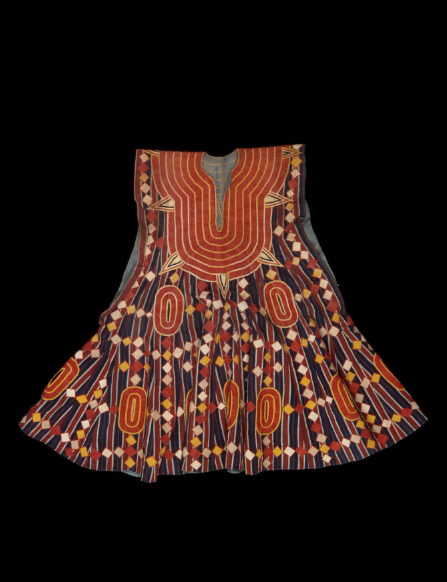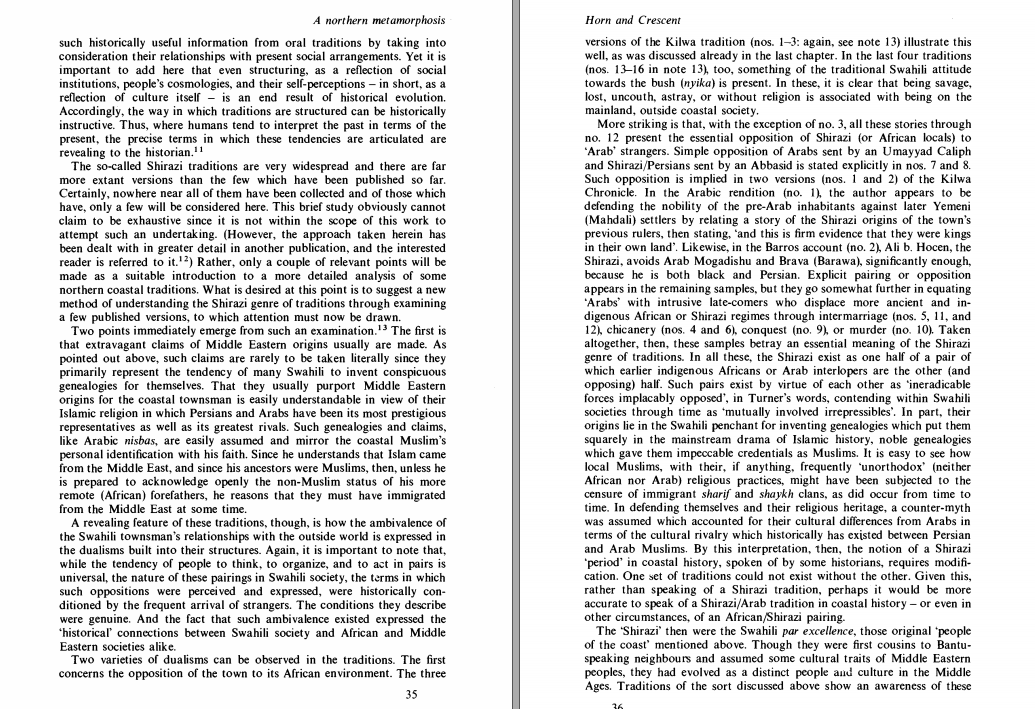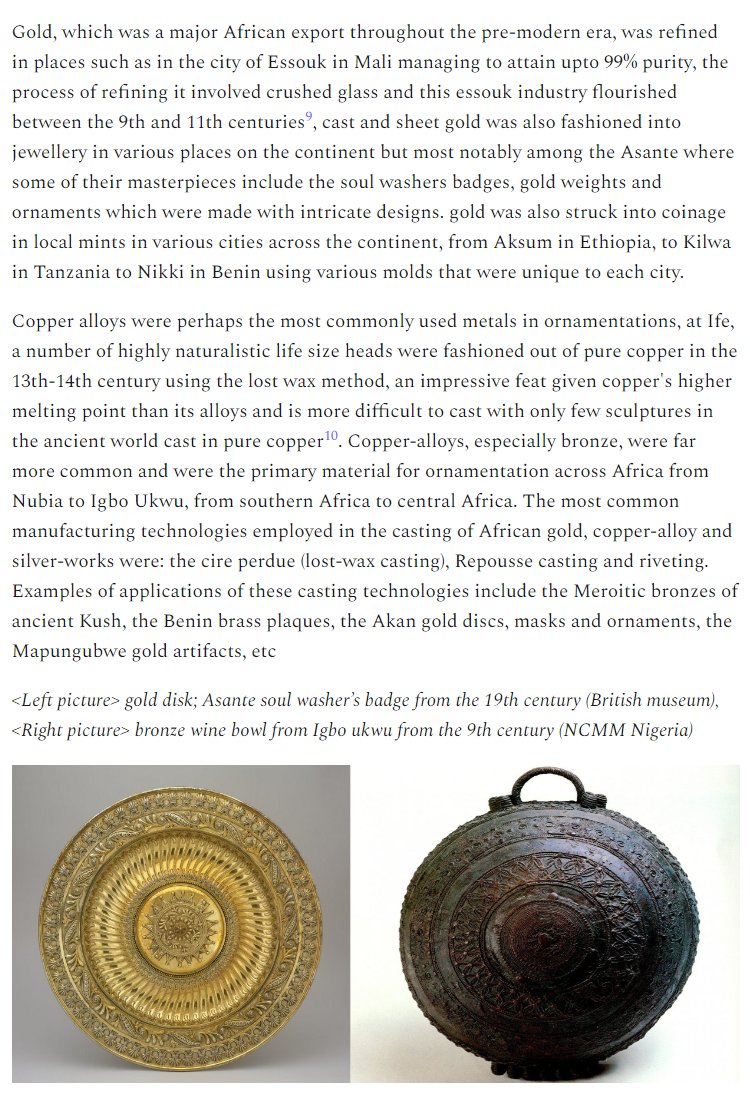
My article:
"Negotiating power in medieval west-Africa: King Rumfa of Kano (1466-1499AD) between the empires of Songhai and Kanem-Bornu"
reform and "peripheral" states;
Explaining the relative political fragmentation of Africa on the eve of colonialism
isaacsamuel.substack.com/p/negotiating-…

"Negotiating power in medieval west-Africa: King Rumfa of Kano (1466-1499AD) between the empires of Songhai and Kanem-Bornu"
reform and "peripheral" states;
Explaining the relative political fragmentation of Africa on the eve of colonialism
isaacsamuel.substack.com/p/negotiating-…


"The 16th century was the zenith of imperial expansion in west Africa
One third of west Africa's current geographical size and more than Half its population was under the control of just Two empires
it was the apogee of state power in west African history"
isaacsamuel.substack.com/p/negotiating-…
One third of west Africa's current geographical size and more than Half its population was under the control of just Two empires
it was the apogee of state power in west African history"
isaacsamuel.substack.com/p/negotiating-…
the golden age of imperial expansion in west Africa brought developments in trade and scholarship
but seen from the perspective of the states peripheral to these empires, it came at a cost of reduced political power
a choice bt'n negotiation and conquest
isaacsamuel.substack.com/p/negotiating-…

but seen from the perspective of the states peripheral to these empires, it came at a cost of reduced political power
a choice bt'n negotiation and conquest
isaacsamuel.substack.com/p/negotiating-…


in the late 15th century, the meteoric rise of Songhai saw the conquest all lands b'tn Mauritania and Benin, while Kanem-Bornu conquered all lands b'tn chad and eastern Niger
both empires then set their sights on the lands b'tn them: where Kano was tucked
isaacsamuel.substack.com/p/negotiating-…
both empires then set their sights on the lands b'tn them: where Kano was tucked
isaacsamuel.substack.com/p/negotiating-…
witnessing the approach of both empires closing in on his small city state, the king of Kano, Muhammad Rumfa choose to negotiate rather than face off with them
but inorder to bargain on firmer ground, he needed first to reform the institutions of his state
isaacsamuel.substack.com/p/negotiating-…
but inorder to bargain on firmer ground, he needed first to reform the institutions of his state
isaacsamuel.substack.com/p/negotiating-…

the reforms he initiated were an inevitable consequence of the rapidly evolving political and economic landscape of west africa at the time as well as the shifts in the internal governance of Kano and the suzerainty imposed on it by the Kanem-Bornu empire
isaacsamuel.substack.com/p/negotiating-…
isaacsamuel.substack.com/p/negotiating-…
the first among the three most important reforms initiated by Rumfa was the creation of the Kano state council with both noble and non-noble executives
to
-reduce the power of king-makers
-elect the King
-check the King's power (since he was a vassal)
isaacsamuel.substack.com/p/negotiating-…

to
-reduce the power of king-makers
-elect the King
-check the King's power (since he was a vassal)
isaacsamuel.substack.com/p/negotiating-…


the task of electing the king fell on the four non-royal members of the council and two of the largest fief-holders were also represented
the positioning of all of whom served to maintain a delicate equilibrium between oligarchy and patrimonialism
isaacsamuel.substack.com/p/negotiating-…
the positioning of all of whom served to maintain a delicate equilibrium between oligarchy and patrimonialism
isaacsamuel.substack.com/p/negotiating-…
he then established the central market of Kano; Kurmi
after an influx of new trade commodities like gold & kola from the region of Gonja (northern Ghana) as well as pressures from caravan traders to regulate Kano's trade
Kurmi is westafrica's oldest market
isaacsamuel.substack.com/p/negotiating-…
after an influx of new trade commodities like gold & kola from the region of Gonja (northern Ghana) as well as pressures from caravan traders to regulate Kano's trade
Kurmi is westafrica's oldest market
isaacsamuel.substack.com/p/negotiating-…

last of the Rumfa's most important innovations were the construction works undertaken in Kano, especially the extension and reinforcement of the city's walls and the construction of a massive palace that doubled as Kano's administrative building
isaacsamuel.substack.com/p/negotiating-…
isaacsamuel.substack.com/p/negotiating-…
Rumfa is credited with the construction of atleast six of Kano's gates, which also mark the wall extensions and fortifications he added
plus the construction of the two palaces -gidan makama and gidan rumfa
these were the nucleus of Kano's administration
isaacsamuel.substack.com/p/negotiating-…

plus the construction of the two palaces -gidan makama and gidan rumfa
these were the nucleus of Kano's administration
isaacsamuel.substack.com/p/negotiating-…

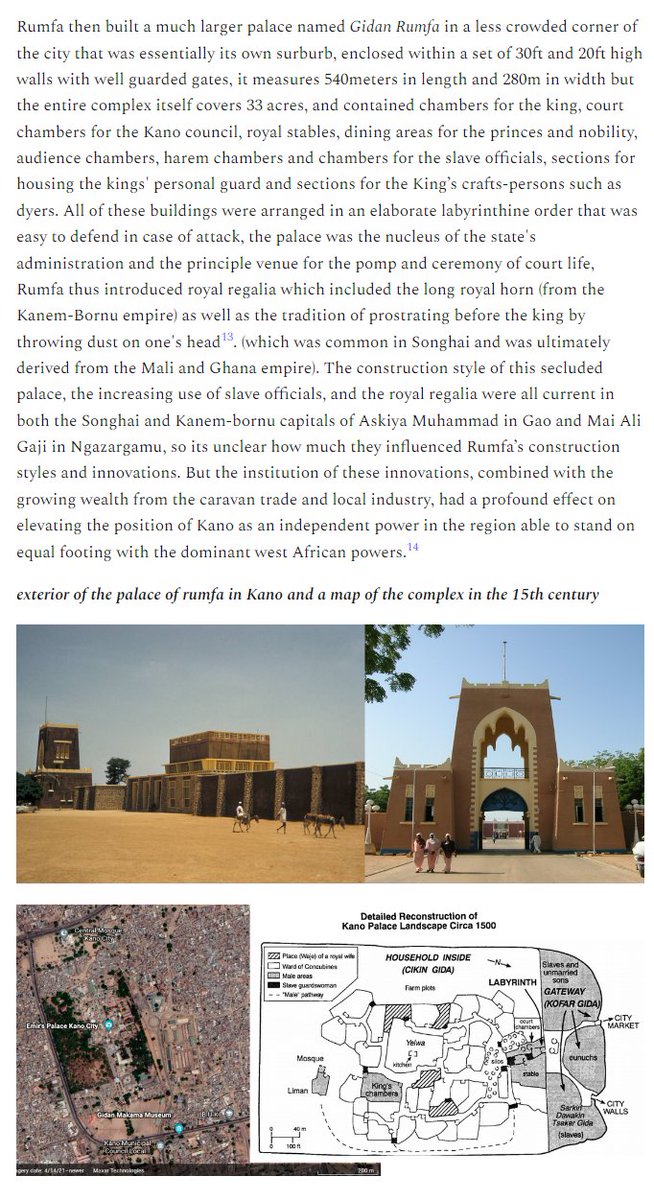
the reforms of Rumfa had immediate effects, northafrican traders took its fame to the maghreb from where al-Maghili would arrive to consecrate Rumfa's reforms
presenting him as a ruler whose piety was on per with the Askiya of Songhai and the Mai of Kanem
isaacsamuel.substack.com/p/negotiating-…
presenting him as a ruler whose piety was on per with the Askiya of Songhai and the Mai of Kanem
isaacsamuel.substack.com/p/negotiating-…
Maghili had little influence on westafrican rulers
the Askiya of Songhai attacked the hausalands, seizing Katsina & Zaria but failing to take Kano (briefly subjecting it to tribute) then taking Kanem's vassal Agadez until his own vassal of Kebbi rebelled
isaacsamuel.substack.com/p/negotiating-…
the Askiya of Songhai attacked the hausalands, seizing Katsina & Zaria but failing to take Kano (briefly subjecting it to tribute) then taking Kanem's vassal Agadez until his own vassal of Kebbi rebelled
isaacsamuel.substack.com/p/negotiating-…

Kebbi later returned to being a Songhai vassal but Kano was independent from both Kanem-Bornu and Songhai after both armies failed to scale its walls
it was the first among the peripheral states largely b'se of its fortification system and its governance
isaacsamuel.substack.com/p/negotiating-…
it was the first among the peripheral states largely b'se of its fortification system and its governance
isaacsamuel.substack.com/p/negotiating-…
Kano's independence at this stage was unique,
Kebbi was under Songhai even after its fall to Morocco and Agadez remained under Kanem
not having to pay tribute, Kano could afford tax-free trade, attract caravans and become the "emporium" of west Africa
isaacsamuel.substack.com/p/negotiating-…
Kebbi was under Songhai even after its fall to Morocco and Agadez remained under Kanem
not having to pay tribute, Kano could afford tax-free trade, attract caravans and become the "emporium" of west Africa
isaacsamuel.substack.com/p/negotiating-…
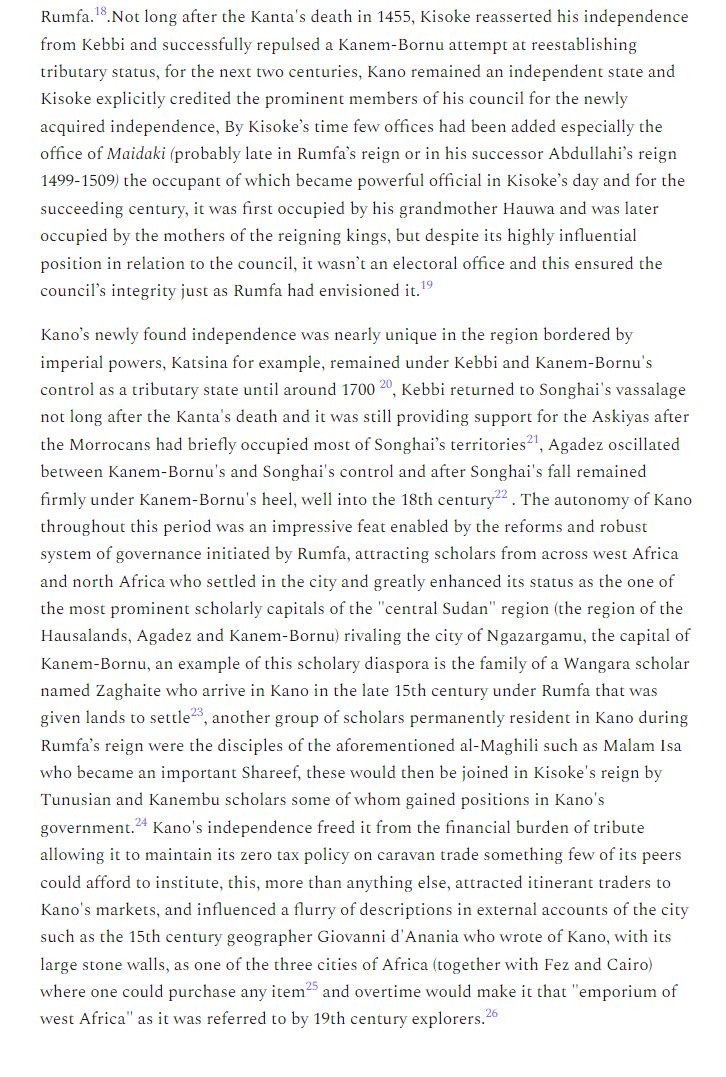
Rumfa's reforms were part of a wider response by peripheral states to the dominant west African empires
that resulted in the rise of many small centralized states centered around highly fortified capitals possessing multiple economic and scholarly centers
isaacsamuel.substack.com/p/negotiating-…
that resulted in the rise of many small centralized states centered around highly fortified capitals possessing multiple economic and scholarly centers
isaacsamuel.substack.com/p/negotiating-…
west Africa's political landscape after the fall of Songhai and the decline of Kanem in the 17th-18th century was dominated by small but powerful states
none of which exceeded 300,000 sqkm
attempts to reestablish large empires in the 19th century faltered
isaacsamuel.substack.com/p/negotiating-…
none of which exceeded 300,000 sqkm
attempts to reestablish large empires in the 19th century faltered
isaacsamuel.substack.com/p/negotiating-…
while popular explanations for the "scramble of Africa" place the blame on Africa's political fragmentation, it should be noted that this wasn't an aversion to African unity but a product of political phenomena which favored small states over large empires
isaacsamuel.substack.com/p/negotiating-…
isaacsamuel.substack.com/p/negotiating-…
• • •
Missing some Tweet in this thread? You can try to
force a refresh











